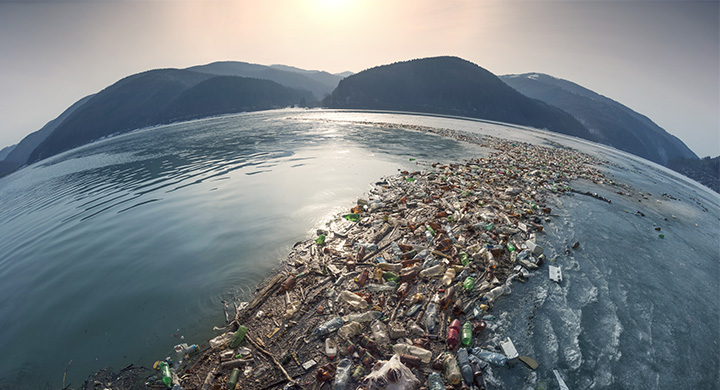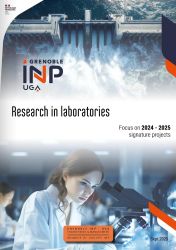Every year, 7 million tons of plastic end up in the ocean. Once dumped in water, plastic packaging, bottles and labels cannot break down completely. Instead, they turn into microparticules that can be found everywhere. Reducing this waste is a major environmental challenge.
To replace plastic food packaging, researchers at Grenoble INP were able to combine technology for two materials that were previously considered to be incompatible. The first of these materials is cellulose, which is studied at LGP2. “While paper has the advantage of being flexible and biodegradable, it also lets through water and gas. On the other hand, ceramics, which is studied at SIMAP, can be both waterproof and gas-proof. But not very flexible!” explains Erwan Gicquel, a postdoctoral researcher at LGP2, who is working on the project with Frédéric Mercier, a CNRS researcher at SIMAP.
As part of a project funded since 2018 (Labex CEMAM and Tech 21), the two scientists developed a hybrid material made up of 99% cellulose. “By adding just enough ceramic material in the right place using a secret bonding process, we are able to obtain a 99% cellulose material that has the advantages of plastic (waterproof and gas-proof) all the while being flexible and printable like paper”, explains Frédéric Mercier.
Several patents are being filed in order to protect the bonding process for combining cellulose and ceramics. This will enable the project to transition to large-scale, low cost production. A startup project called HANABi is currently being established via the SATT Linksium and should be ready to go in the Fall of 2021. Several players in the food industry have already expressed interest in the project (for example, to replace wine labels). But the “zero plastic” HANABi is also targeting other markets such as packaging or construction, where it could be used for isolation and benefit from the flexibility and lightness offered by cellulose.
*CNRS, Grenoble INP, UGA
**CNRS, Grenoble INP




